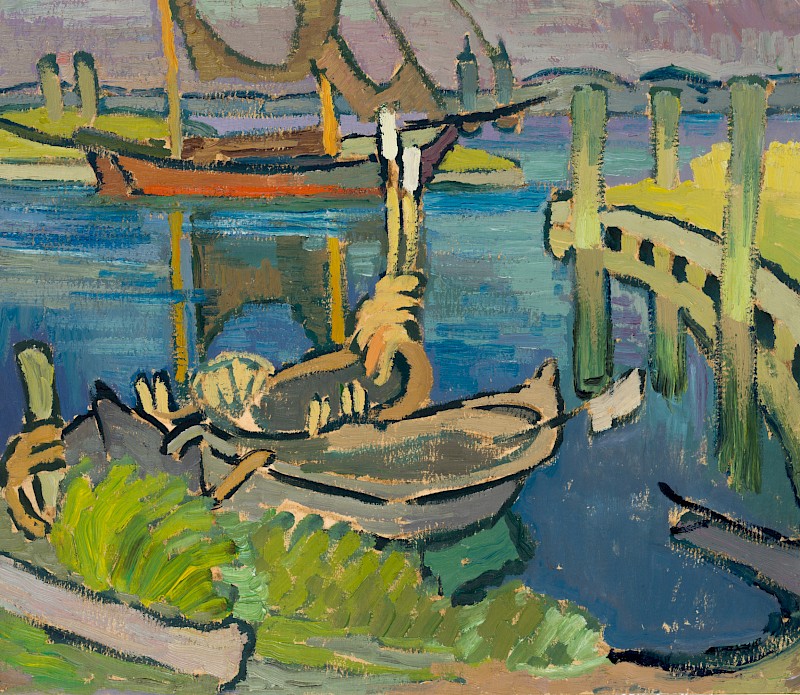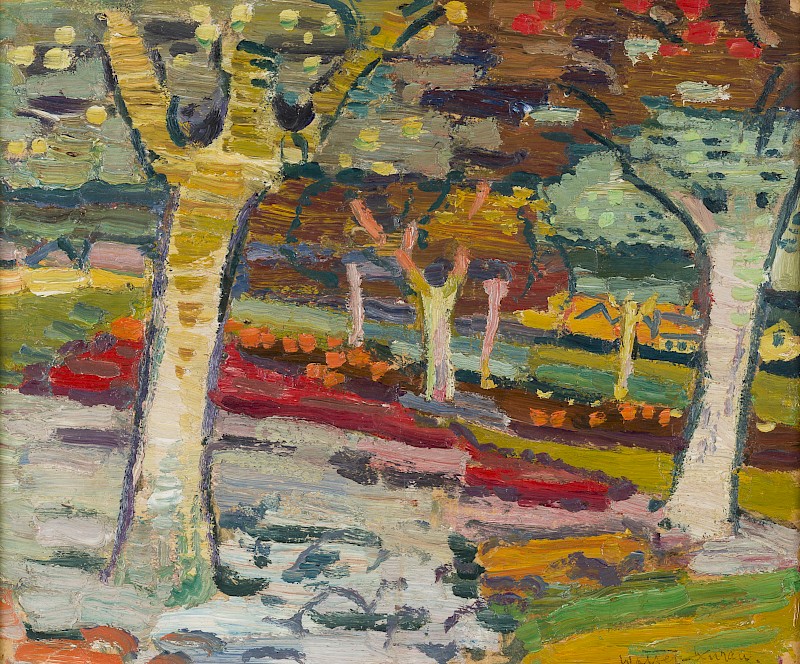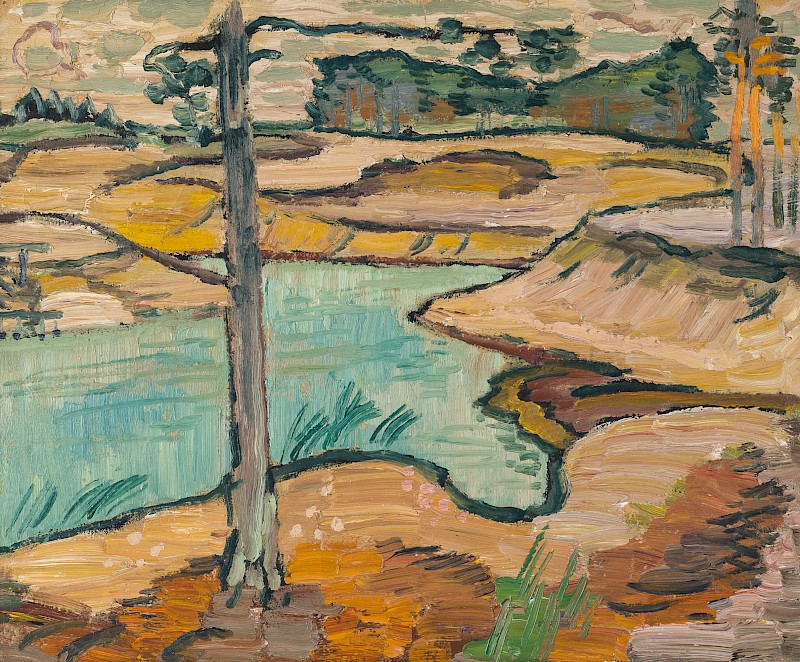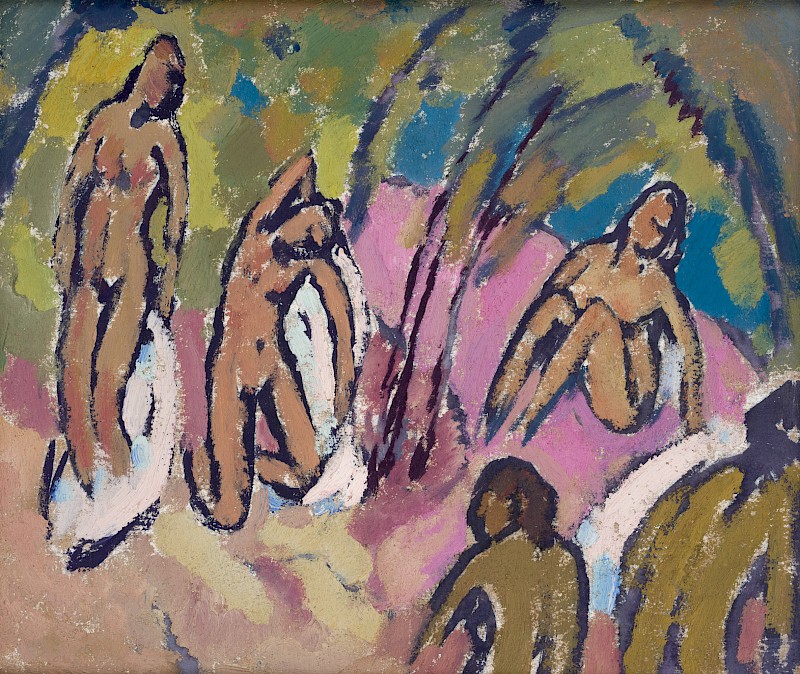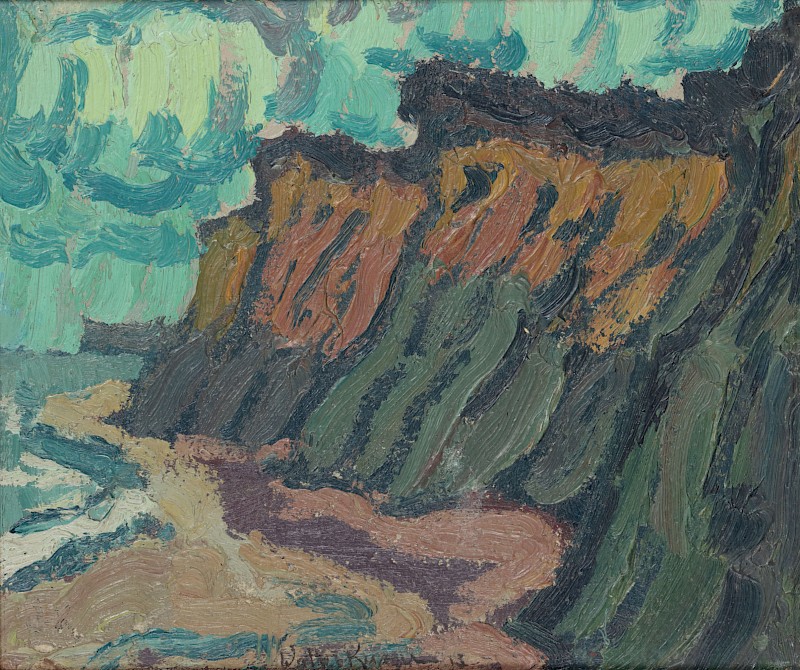“The painterly joy in nature itself only begins as soon as the eye behind the objects begins to see the melodic structure of the colors and the fine interrelationships in the architecture of the forms,” wrote the Baltic painter Johann Walter alias Walter-Kurau (1869 Jelgava / Mitau - 1932 Berlin), who is known in his Latvian homeland under the name Johans ((Jānis) Valters.
After studying at the St. Petersburg Imperial Academy of Arts, Walter worked in his hometown Jelgava / Mitau from 1898 to 1906, where his work developed around 1900 in an interaction between Impressionism, Art Nouveau and a neo-romantic mood art. He is considered to be one of the founders of modern Latvian painting, in which he held a special position through the combination of his painterly talent with a pronounced musical talent.
When he moved to Germany in 1906, he took the stage name Walter-Kurau. There he developed a broad teaching activity and collected creative impressions on many painting trips. His creative period in Dresden (1906-16) is characterized by a late impressionist style, while for the Berlin period (1916 / 17–1932) he chose the pursuit of “the greatest possible abstraction with the most rigorous study” of nature as the leitmotif of his further artistic development. The late creative phase shows strongly processed echoes of the painting of Paul Cézanne, German Expressionists as well as French Fauvists and Cubists.
The exhibition is presented in cooperation with the Embassy of the Republic of Latvia as part of the anniversary “One hundred years of diplomatic relations between Latvia and Germany”. The works shown come from the private collection of Pēteris Šmidre. They give a rich insight into the part of Walter's work that was created in Germany. The exhibition was curated by the art historian Dr. Kristiāna Ābele from the Latvian Art Academy in Riga.
